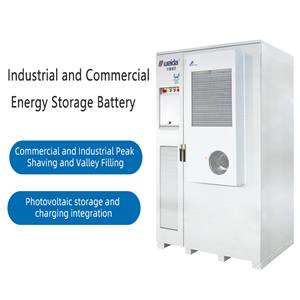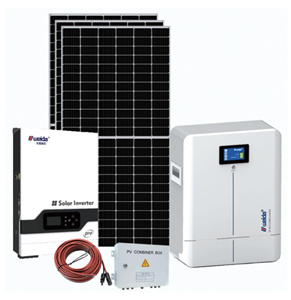History of Home Energy Storage Systems and Battery Energy Storage Systems (BESS)
A home energy storage device is a device that stores electrical energy for use when needed - also known as an electrical energy storage product or "battery energy storage system" (BESS), hereafter referred to as home storage. The core component of a BESS is a rechargeable battery, typically a lithium-ion or lead-acid battery. The other components are the inverter, a control system that intelligently controls charging and discharging.
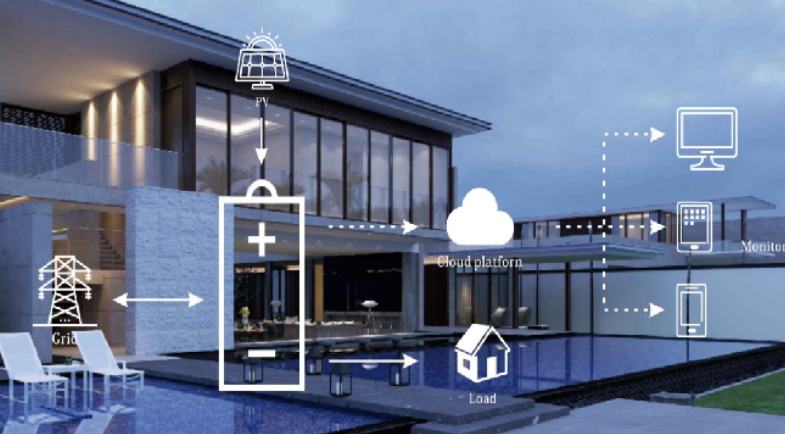
With energy storage in the average home, we can realize the concept of distributed power generation, ease the pressure on grid transmission, reduce the use of fossil fuels, and is a necessary decentralization initiative to achieve carbon neutrality or zero-neutrality.
History of Development
Before exploring home storage in detail, let's take a look at the history of energy storage systems (ESS):
Back in the 1950s and 1960s, the U.S. Department of Energy conducted the Energy Storage Systems program, led by Sandia National Laboratories, to conduct research on how to stockpile nuclear energy. By the 1970s, as the U.S. faced a severe oil crisis, the focus of Sandia Labs' research shifted to renewable energy sources that could replace oil. In the 1980s, the U.S. Department of Energy further expanded Sandia Labs' research program to include exploratory battery development and testing while creating renewable energy sources. Sandia Labs has since taken on the exploration of energy storage programs. At that time, however, the energy storage concept was still national in scope and did not involve commercial or residential use.
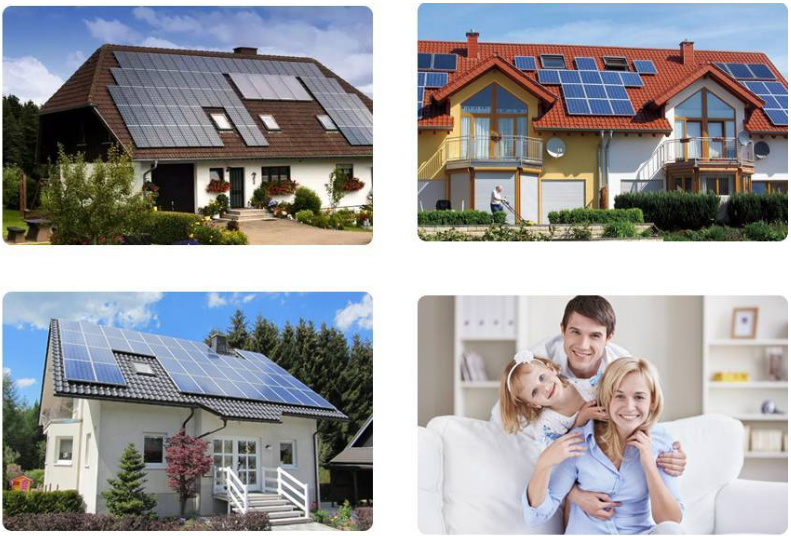
In 1991, the program was upgraded to a grid battery energy storage program, and some testing of electrical energy storage facilities for commercial use was also begun. The International Lead-Zinc Organization (ILZO) and the Electric Power Research Institute (EPRI) were also involved in research during this period. By 1996, energy storage systems were taking shape and beginning to expand for commercial and residential use.
In terms of strategic opportunities for home energy storage, Europe and the United States are currently ahead of the domestic market, with their more advanced needs in terms of home PV penetration and power stability, which is why the overseas home energy storage market is more mature than the domestic market, and Europe and the United States are currently the priority markets for the expansion of Weida as a brand.
Benefits of home storage system:
National level:
Overcome transmission losses: power station to the family transmission power loss is inevitable, especially in the population density of the metropolis, can not build a power station within it, transmission loss is greater. However, if households are encouraged to generate and store electricity on their own, and external transmission is reduced, then transmission losses can be significantly reduced, and grid transmission can be made efficient.
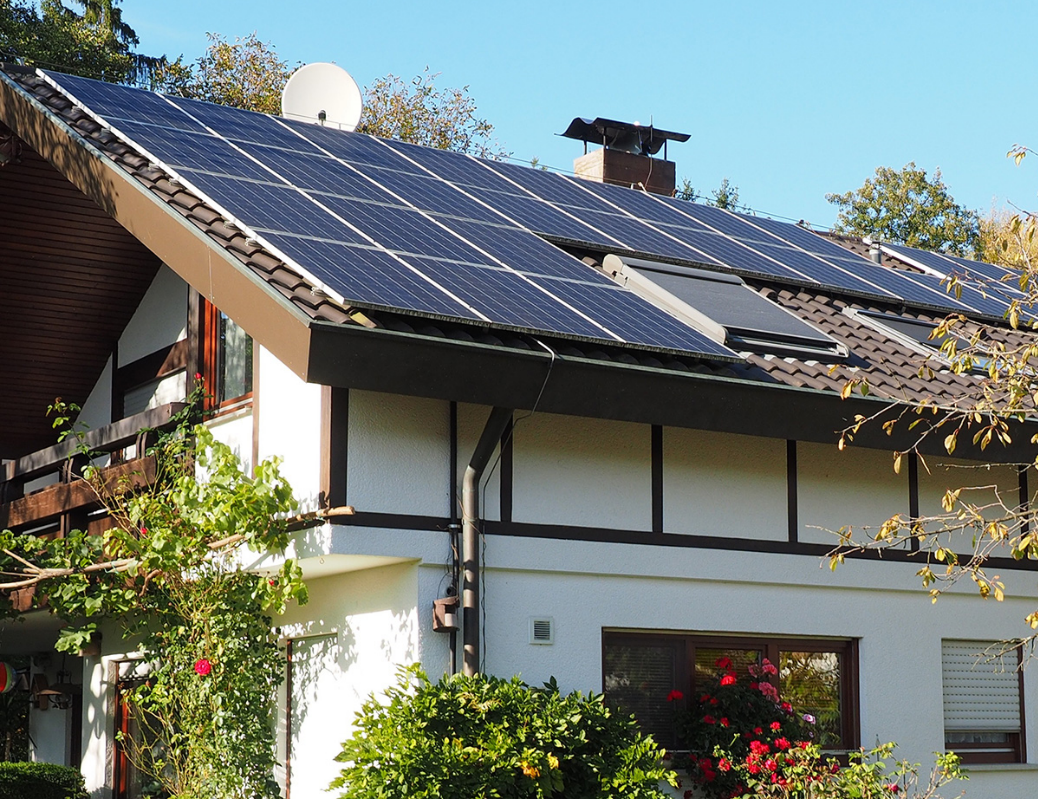
Grid support: Household energy storage that is connected to the grid and feeds surplus power from household generation into the grid can greatly relieve grid pressure: 1) by providing power supply response during peak hours, which can reduce the use of inefficient diesel generation; and 2) by using an industrial frequency that is compatible with the local grid, such as 50 Hz or 60 Hz.
Reducing the use of fossil energy: Households storing their own power generation can greatly improve the efficiency of electricity use, while the technology of generating electricity from fossil energy sources such as natural gas, coal, oil and diesel will be phased out.
Household level:
Reducing energy bills: households storing their own power generation can dramatically reduce grid electricity use.
Avoid peak tariffs: Storage batteries can store electricity during low peak periods and discharge it during peak periods.
Realize power independence: Families will store solar power generation during the day and use it at night, while sudden power outages can also be used as a backup power source.
Shortcomings of home storage systems:
Environmental impact of batteries: Early home storage systems generally used lead-acid batteries, which have the advantage of being highly recyclable - 99% of lead-acid batteries in the U.S. are recyclable. However, the lead and sulfuric acid electrolytes in lead-acid batteries are extremely harmful to the environment. In addition, lead-acid batteries have a short lifespan and are gradually being replaced by lithium-ion batteries.
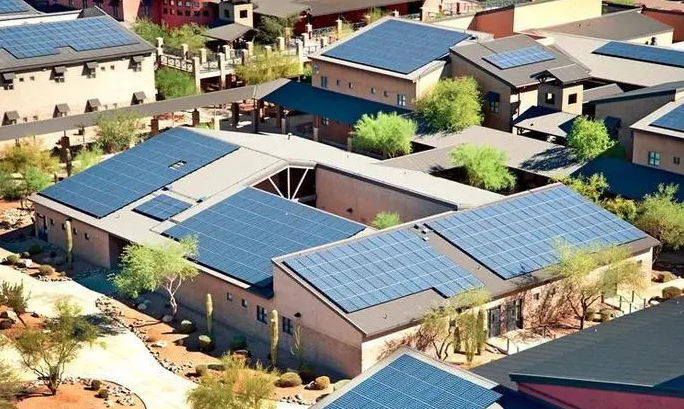
Advantages of lithium-ion battery
1. Long cycle life: lithium-ion batteries are charged and discharged at a rate of 1 C. Its cycle life is greater than or equal to 500 times. However, even if the lead-acid battery is discharged at 0.5 and charged at 0.15c, its cycle life is less than or equal to 350 times, and its capacitance is less than or equal to 60%.
2. Good low-temperature discharge performance: lithium-ion batteries can work normally at -25℃, the capacity can reach 70% of the standard, while lead-acid batteries can reach 50% of the capacity at -10℃, but not work normally at -25℃.
3. Strong charging capacity:A fully charged lithium-ion battery placed for 2 months, its capacity is greater than or equal to 80%, while lead-acid batteries placed for 2 months, only 40%-50% of the nominal capacity.
4. Strong endurance. The weight of lithium-ion battery is only 30% of lead-acid battery, so under the same voltage and capacity, lithium-ion battery has stronger endurance.
5. High specific energy:Since the volume of lithium-ion battery is only 30% of the volume of lead-acid battery, the energy reserve of lithium-ion battery is larger than that of lead-acid battery under the same space usage.
6. Wide operating temperature range: lithium-ion batteries can work in the range of -25c to 55c, while lead-acid batteries can only work in the range of 10c to 40c.
7. Short charging time: lithium-ion batteries can be charged with high current, the charging time is only 4-5 hours, while lead-acid batteries take 8-10 hours.
8. High environmental performance: compared with lead-acid batteries, lithium-ion batteries are very environmentally friendly products, lead-acid batteries contain a large number of harmful to the human body and the environment of the heavy metal lead.
9. High-current discharge: lithium-ion batteries discharge high current at 1C, the capacity is only 60% of the rated capacity.
10. High-current discharge does not affect the cycle life: lithium-ion battery 1.5c multiplier high-current discharge does not affect the cycle life. However, lead-acid batteries are discharged at a high current rate of 1.5c. Its cycle life is only 30%-40% of the nominal cycle life.
Household level:
High upfront cost: Today's battery cost is very high, ranging from $400-700/kWh.
Complicated installation: some home storage systems have to be equipped with additional inverters, and smart monitoring devices.
Large footprint: the size of a system is about 500x250x700mm (not counting the solar panels), and at this stage only single-family houses can meet the space requirements.
Home Energy Storage
Home energy storage devices store electricity locally for later use. Electrochemical energy storage products, also known as Battery Energy Storage Systems (or BESS for short), have at their heart rechargeable batteries, usually based on lithium-ion or lead-acid batteries, which are computer-controlled with intelligent software to handle the charging and discharging cycles. The Company is also developing small flow battery technology for home use. As local energy storage technologies for home use, they are small relatives of battery-based grid storage and support the concept of distributed generation. When used in conjunction with on-site generation, they can virtually eliminate outages in an off-grid lifestyle.
On-site generation
Storage typically comes from on-site solar photovoltaic panels generated during the day and stored electricity consumed after sunset, when energy demand peaks in unoccupied homes during the day. Small wind turbines are less common, but can still be used as a supplement or alternative to solar panels for home use. Electric cars used on weekdays need to be charged overnight and are ideal for home energy storage in homes with solar panels and low daytime electricity use. Electric car manufacturers BMW, BYD, Nissan and Tesla sell private label home energy storage devices to their customers. By 2019, such devices have not followed car battery price reductions. These devices can also be programmed to take advantage of differential tariffs to provide lower-priced energy at times of low demand - in the case of the UK's Economy 7 tariffs, seven hours from 12:30 a.m. - to be used for consumption at times of higher prices. Due to the increasing popularity of smart meters, smart tariffs will increasingly be used in conjunction with home energy storage devices to take advantage of low off-peak prices and avoid the use of high-priced energy at times of peak demand.
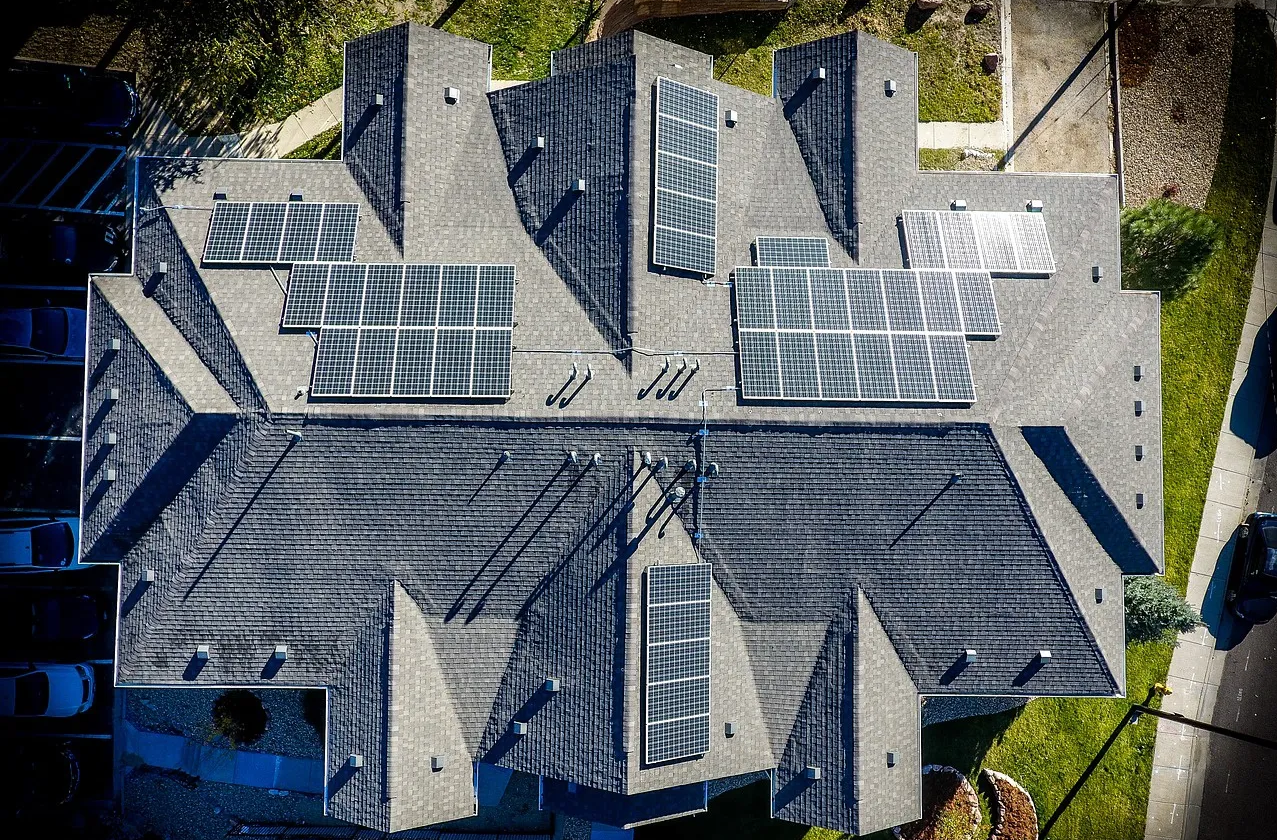
What is home energy storage? Explaining the pros and cons of home energy storage
Home energy storage is when a home energy storage device stores electricity locally for later use. Electrochemical energy storage products, also known as battery energy storage systems (or BESS for short), have at their core rechargeable batteries, usually based on lithium-ion or lead-acid batteries, that are computer-controlled with intelligent software to handle the charging and discharging cycles.
I. Advantages of home energy storage
1, overcoming grid losses: Due to transmission losses in the grid, the transmission of electricity from power stations to population centers is inherently inefficient, especially in dense power-consuming urban agglomerations where power stations are difficult to site. By allowing a greater percentage of on-site generation to be consumed on-site rather than exported to the energy grid, home energy storage devices can reduce grid transportation inefficiencies.
2. Energy Grid Support
Home energy storage devices, when connected to a server via the Internet, could theoretically be ordered to provide very short-term services to the energy grid:-
(1) Peak hour demand stress reduction-Providing short-term demand response during peak demand periods, reducing the need for inefficient operation of short-term generation assets such as diesel generators.
(2) Frequency correction-Provide ultra-short-term correction to maintain the power supply frequency within the tolerance required by the regulator (e.g., 50 Hz or 60 Hz +/- n%).
3. Reducing dependence on fossil fuels
Due to these efficiencies and their ability to increase on-site consumption of the sun's energy, these devices reduce the amount of electricity generated from the use of fossil fuels (i.e., natural gas, coal, oil, and diesel).
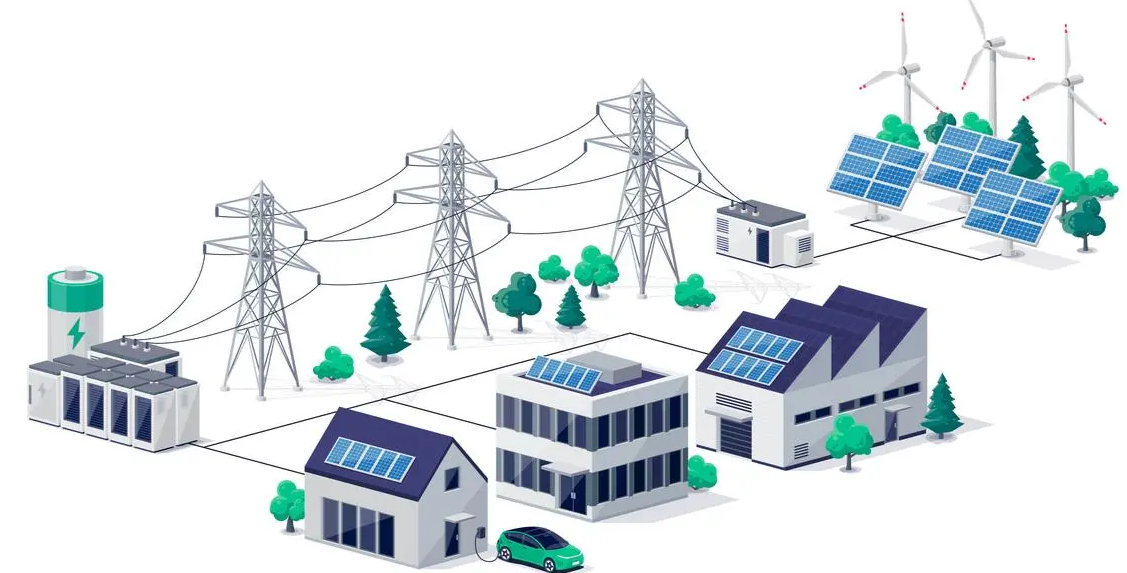
What are the trends in home energy storage systems?
Home energy storage systems can usually be combined with distributed photovoltaic power generation to form a home photovoltaic storage system. Home storage system mainly includes two types of products: batteries and inverters.
(1) From the battery trend, the energy storage battery to higher capacity evolution. With the increase in residential electricity consumption, the amount of electricity per household gradually increased, the battery can be modularized to achieve system expansion, while high-voltage batteries become the trend.
(2) From the trend of inverters, the demand for hybrid inverters suitable for the incremental market and off-grid inverters that do not need to be connected to the grid has increased.
(3) From the end product trend, the current split type is the main, that is, the battery and inverter system with the use of the subsequent gradual development to the integrated machine.
(4) From the regional market trend, the grid structure and power market differences caused by the mainstream products in different regions are slightly different. Grid-connected mode is dominant in Europe, more off-grid mode in the United States, and virtual power plant mode is being explored in Australia.
Why is the overseas home energy storage market continuing to grow? Benefiting from the distributed PV & energy storage penetration rate of dual-wheel drive, overseas home energy storage rapid growth. Photovoltaic installation, Europe's high degree of energy dependence on foreign countries, the Russia-Ukraine conflict has exacerbated the energy crisis, European countries have upwardly adjusted the PV installation expectations. Energy storage penetration, rising energy prices prompted by rising residential electricity prices, energy storage economy, countries have introduced subsidy policies to encourage household energy storage installation.
How is the development of overseas market and how big is the market space? The U.S., Europe and Australia are the main markets for residential energy storage. According to BNEF statistics, in 2020, the U.S. will add 154MW/431MWh of installed capacity for household energy storage, mainly driven by subsidy policies; Europe will add 639MW/1179MWh of installed capacity for household energy storage, and the economy of household storage will be enhanced by the rapid rise in residential electricity prices; Australia will add 48MW/134MWh of installed capacity for household energy storage, and the high penetration rate of household photovoltaic has the basis for the development of household storage, and the virtual power plant will have a high penetration rate of household PV. The high penetration rate of household PV has the basis for the development of household energy storage, and the virtual power plant market aggregates household energy storage to participate in auxiliary services to improve the rate of return. We expect that, assuming a 15% penetration rate of energy storage in the newly-installed PV market and a 2% penetration rate of energy storage in the storage market in 2025, the global household energy storage capacity will reach 25.45GW/58.26GWh, with a compounded growth rate of installed energy of 58% from 2021 to 2025.
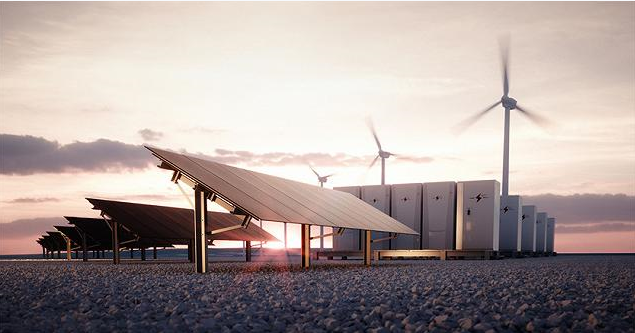
What are the key barriers to the home energy storage industry? We believe that the key barriers in the home energy storage industry are channels and product strength. Home energy storage systems are usually used in conjunction with rooftop photovoltaic, and the product form is similar to small household appliances, with certain consumer product attributes, thinking from the perspective of 2C products.
(1) The channel affects the reach and market coverage of the product, and manufacturers can build their own overseas channels or deeply bind with the channel to achieve the sales purpose;
(2) Technical parameters such as product carrying capacity, voltage level and coupling method determine the market positioning of the product, and R&D investment and service system construction are the key to guarantee product power.
Which segments will benefit?
Battery and PCS are the two major components of home energy storage system, which are the most benefited segments of home energy storage market. According to our estimation, in 2025, the new installed capacity of home energy storage will be 25.45GW/58.26GWh, corresponding to 58.26GWh of battery shipments and 5.45GW of PCS shipments, and we expect that by 2025, the incremental market space for batteries will be 78.4bn yuan, and the incremental market space for PCS will be 20.9bn yuan. Therefore, the industry's energy storage business accounted for a high proportion of large market share, channel layout, strong brand enterprises will benefit.
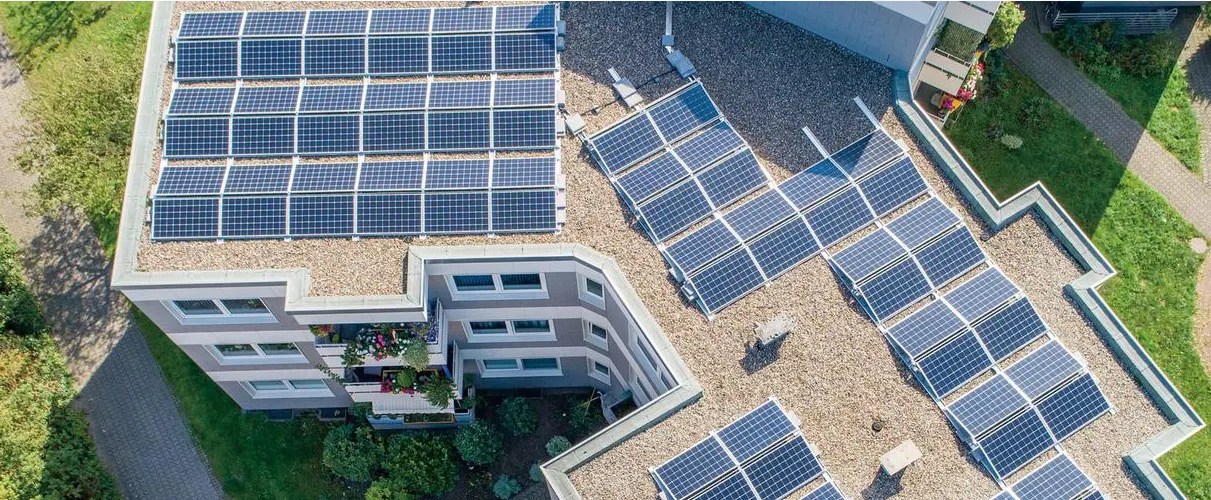
1, home storage products: to the all-in-one machine, higher charged amount of trend development
1.1 Product: stock and incremental household photovoltaic market-oriented supporting demand
Home energy storage is usually used in conjunction with household photovoltaic, installed capacity ushered in rapid growth. Home energy storage system, also known as battery energy storage system, the core is a rechargeable energy storage battery, usually based on lithium-ion or lead-acid batteries, controlled by a computer, in coordination with other intelligent hardware and software to achieve the charging and discharging cycle. Home energy storage systems can usually be combined with distributed photovoltaic power generation to form a home photovoltaic storage system. From the user side, home photovoltaic storage systems can eliminate the adverse effects of power outages on normal life while lowering electricity bills; from the grid side, home energy storage devices that support unified scheduling can alleviate peak hour power tensions and provide frequency correction to the grid.
Home energy storage system is a new type of hybrid system for energy acquisition, storage and use, which is based on the traditional PV grid-connected power generation system to add lithium battery storage power, consisting of batteries, hybrid inverters and PV panels. The following are common types and characteristics of home PV energy storage systems.
(1) Hybrid home PV energy storage systems
Hybrid PV energy storage system generally consists of PV modules, lithium batteries, hybrid inverters, smart meters, CT, by the grid, grid-connected loads and off-grid loads. The system can directly charge the battery through DC-DC conversion, or realize bidirectional DC-AC conversion for battery charging and discharging.
(2) Coupled home photovoltaic energy storage system
The coupled PV energy storage system, also known as AC-modified PV energy storage system, generally consists of PV modules, grid-connected inverter, lithium battery, AC-coupled energy storage inverter, smart meter, CT, by the grid, grid-connected loads and off-grid loads. The system can convert PV to AC power through the grid-connected inverter, and then convert the excess power to DC power through the AC-coupled storage inverter and store it in the battery.
(3) Off-grid home PV energy storage system
An off-grid home PV energy storage system generally consists of PV modules, lithium batteries, an off-grid energy storage inverter, a load and a diesel generator. The system can charge the battery directly through DC-DC conversion, or it can realize bidirectional DC-AC conversion for battery charging and discharging.
(4) Photovoltaic energy storage energy management system
The PV energy storage energy management system generally consists of PV modules, grid-connected inverters, lithium batteries, AC-coupled energy storage inverters, smart meters, CTs, by the grid and control systems. The control system can receive and respond to external commands, respond to the power demand of the system, accept the real-time control and scheduling of the system, and participate in the optimal operation of the grid, so that the use of electric energy is more efficient and economical.
According to the different coupling methods of PV and energy storage systems, they are categorized into DC-coupled systems and AC-coupled systems, which are suitable for the incremental market with newly installed PV systems and the stock market with installed PV systems, respectively. The incremental market has more space and is the main driving force for future market growth:
(1) Incremental market (new PV + energy storage systems installed in target households): DC-coupled products are generally used. The DC-coupled energy storage system consists of a battery system and a hybrid inverter, which combines the functions of a PV grid-connected inverter and an energy storage converter. The advantage of DC coupling is that both PV and energy storage batteries complete the converter through the hybrid inverter, without the need for additional installation of PV grid-connected inverter, higher system integration, installation and after-sales service are more convenient, while facilitating intelligent monitoring and control. Some families who have already installed PV systems choose to remove the original PV grid-connected inverter and install a new hybrid inverter.
(2) Inventory market (target households have already installed PV and added new energy storage systems), generally using AC-coupled products. Only need to add battery and energy storage converter, does not affect the original PV system, and the design of the energy storage system in principle and the PV system has no direct relationship, can be based on demand. The advantage of AC coupling is high safety: with AC coupling, the energy is pooled at the AC end and can either be supplied directly to the load or fed into the grid, or charged directly to the battery via the bi-directional converter, which allows the use of low-voltage PV and low-voltage batteries, eliminating the risk of DC high voltage in the energy storage system.
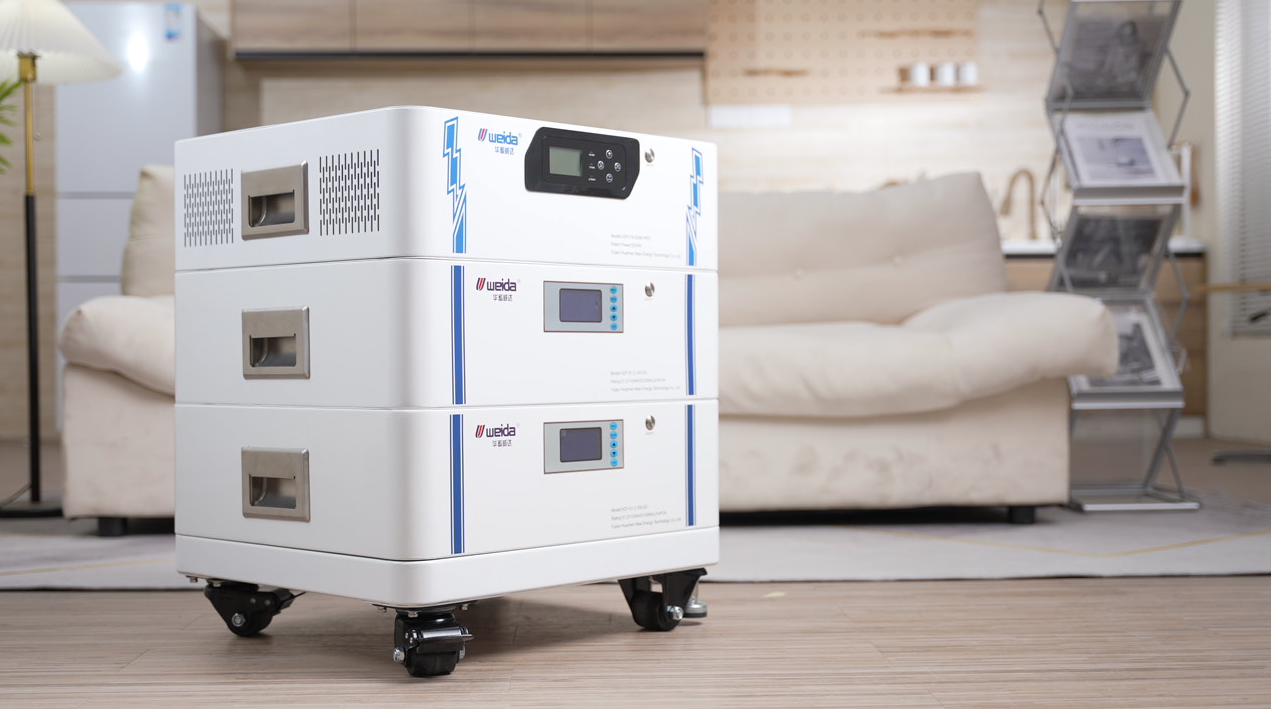
According to whether the system is connected to the grid, home energy storage system can be divided into grid-connected system and off-grid system, the core difference lies in whether to access the grid, most of the regions are currently used in the grid-connected and off-grid all-in-one system.
(1) Grid-connected systems, PV and energy storage systems can be connected to the grid, and power can be purchased from the grid when the PV or battery power is insufficient. It is suitable for regions with stable power systems and relatively low electricity prices.
(2) Off-grid systems, suitable for areas such as deserts and islands where there is no power grid, or areas where the power grid is unstable and needs to be self-generated. Using off-grid energy storage converter, usually with a diesel generator interface, in the night when the battery power supply is insufficient to supplement the power.
(3) Grid-connected and off-grid machines, which have the function of switching between grid-connected and off-grid, or integrating grid-connected and off-grid modes in one machine, which can be switched to off-grid mode during power outages, and are suitable for areas with unstable power systems and frequent power outages.
The core hardware equipment of the home energy storage system includes batteries and converters, according to the degree of integration of the product, there are two main modes: all-in-one machine and split machine, the current market is dominated by the split machine, but the all-in-one machine is the development trend of the high-end market:
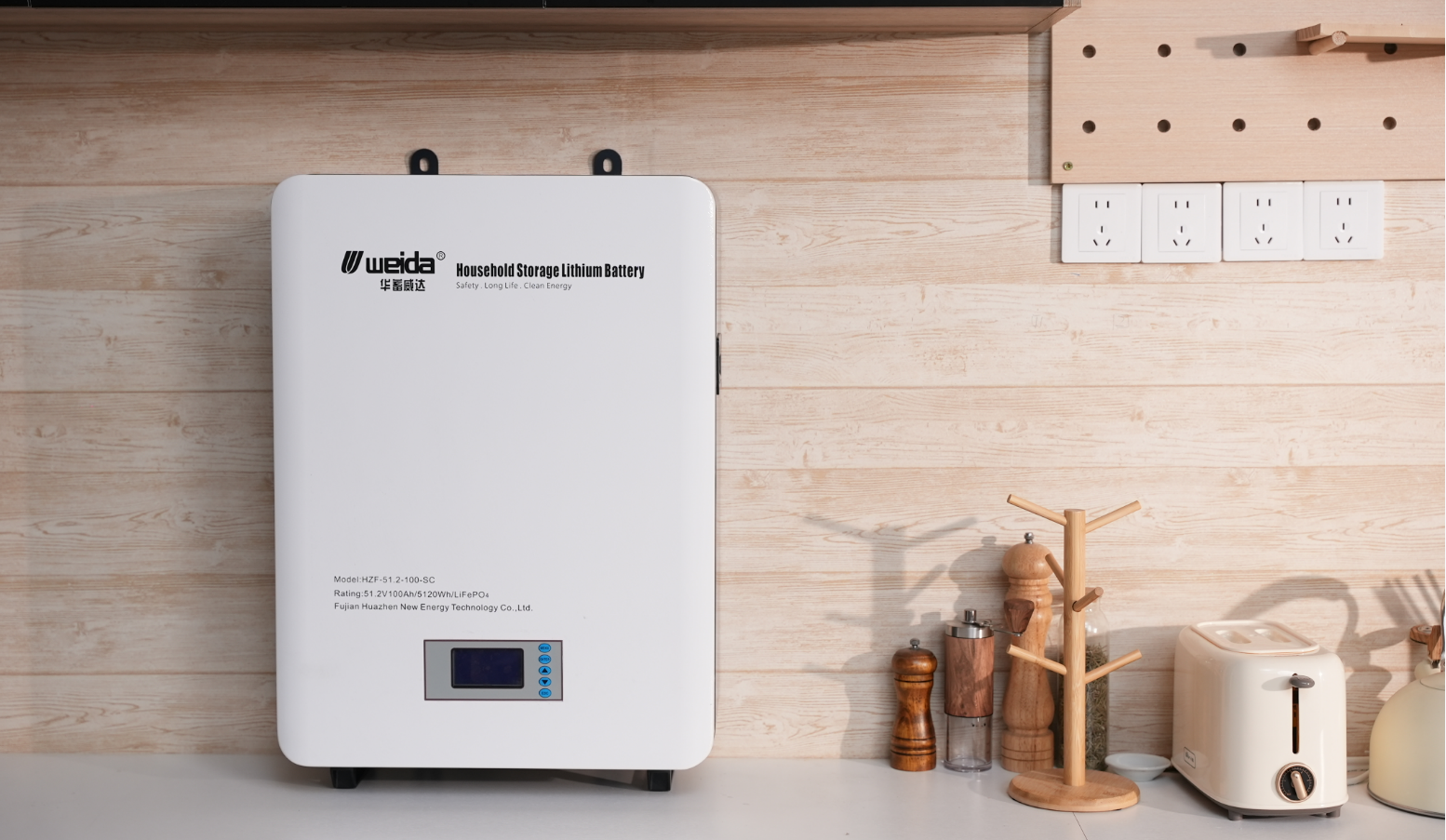
(1) Split machine, some AC-coupled products and DC-coupled products adopt the split machine mode, the battery system and inverter system are provided by pack manufacturers and inverter manufacturers respectively, and then reach the end users through the channels of integrators, dealers and installers.
(2) All-in-one, the product is an all-in-one system including battery and inverter, usually an AC-coupled product. Upstream battery system and inverter as a supplier to provide products, usually using OEM mode, the final product does not present the supplier's brand, product sales, after-sales all by the brand.
According to the voltage of the battery pack, it can be divided into high-voltage batteries and low-voltage batteries, and the industry is showing a trend of conversion to high-voltage batteries, the main purpose of which is to improve efficiency and simplify the system design, but at the same time, the consistency of the battery cells and the BMS management capabilities require more. High-voltage batteries usually have a pack voltage above 48V, and high voltage at the pack level can be realized by connecting multiple cells in series. In terms of efficiency, using the same capacity of the battery, the battery current of the high-voltage energy storage system is smaller, less interference to the system, and the efficiency of the high-voltage energy storage system is higher; in terms of system design, the circuit topology of the high-voltage hybrid inverter is simpler, with smaller dimensions, lighter weight, and more reliable. However, high-voltage batteries are made of multiple cells connected in series and parallel, the higher the voltage, the more cells are connected in series, the higher the consistency requirement of the cells, and it needs to be coupled with a highly efficient BMS management system, or it will be prone to failure.
Home energy storage, home peak and valley power storage program
Home energy storage is to store electricity to be used when needed - also known as power storage products or "battery energy storage system" (BESS), hereinafter referred to as home storage. The core component of a BESS is a rechargeable battery, typically a lithium-ion or lead-acid battery. The other components are the inverter, a control system that intelligently controls charging and discharging.
With energy storage in the average home, we can realize the concept of distributed generation, ease the pressure on grid transmission, reduce the use of fossil fuels, and is a necessary decentralization initiative to achieve carbon neutrality or zero-neutrality.
How to configure a home energy storage
How to configure a home energy storage? How is the battery capacity selected?
In a home energy storage system, the main components are the module, the storage machine, and the battery; in the form of the picture above, the energy storage is set up in the garage for use in our electric vehicles.

Recommended system configuration
Single-phase energy storage system: 5kW+10kWh

Three-phase energy storage system: 10kW+10~20kWh
Energy storage system is divided into single-phase, three-phase; the following picture is a simple energy storage system diagram, in addition to the three major components which also includes meters, household loads, etc., both single-phase and three-phase have corresponding solutions.
How to configure a set of home energy storage? How to choose the battery capacity?
Introduction of energy storage inverter
How to configure a set of home energy storage? How to choose the battery capacity?
pcs ES/ET energy storage machine are both bi-directional energy storage, support off-grid and on-grid integration, UPS function, cell phone APP control, and can realize anti-reverse current and power limitation, etc. But there is a difference between ES and ET.
However, there is a difference between ES and ET, ES is a single-phase bi-directional energy storage inverter, ET is for three-phase grid; and it supports unbalanced three-phase output and single-phase load;
In addition, ES is connected to low-voltage batteries, ET voltage range is higher, is connected to high-voltage batteries; that they are also different charging and discharging current. This will also be reflected in the interface of the inverter.
Because ES can reach 100A charge/discharge current, so the corresponding battery interface is also larger, to use 25 square cables, ET charge/discharge current is only 25A, 6 square cables are enough.
So the biggest feature of these two machines is that they are off the grid as a whole, in addition to the function of the UPS, grid sudden power failure inverter will automatically switch to battery power, and off-grid switching time is less than 10ms, UPS level response time, belongs to the uninterruptible power supply; and many inverter manufacturers of energy storage inverters for EPS, belongs to the emergency power supply, the switching time is just less than 5s.
Introduction of energy storage battery
Battery is recommended to use lithium batteries, has been compatible with many battery brands, like BYD, Wo Tai, Pai can; In addition, there are still some batteries are still doing the matching, in the customer to buy the machine before you must first confirm whether to use is compatible with the battery brand.
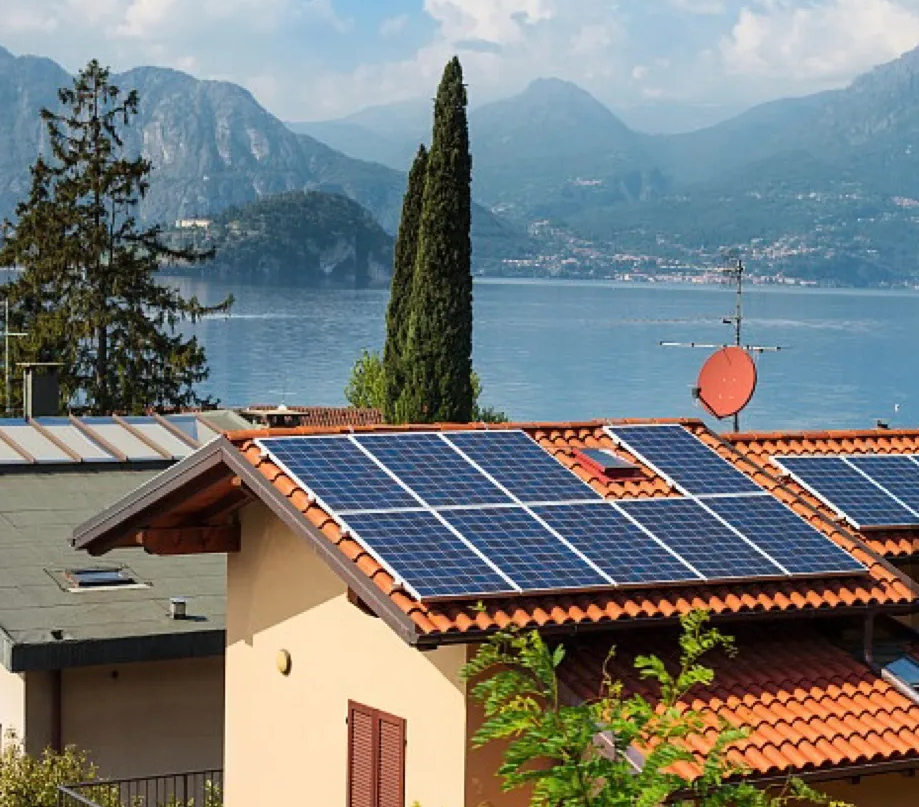
How to configure a set of home energy storage? How to match the battery capacity?
Lithium batteries from lithium metal or lithium alloy as the anode material, the use of non-aqueous electrolyte solution batteries, high energy, long service life, light weight and many other advantages, widely used in hydro, thermal, wind and solar power stations and other energy storage power systems.
Lithium iron phosphate (LFP) battery
Lithium ternary (NCM/NCA) battery
Lithium Cobaltate (LCO) Battery
Other lithium batteries, such as lithium manganate, lithium titanate, etc.
How to configure a set of home energy storage? How to choose the battery capacity?
Main performance parameters of the battery
Costs of energy storage system components
How to configure a home energy storage system? How to choose the battery capacity?
Working Mode 1
How to configure a home energy storage system? How to choose the battery capacity?
Load Consumption Prioritization.
PV - Battery - Grid
The electricity generated by PV is prioritized for use by the load, the excess electricity is stored in the battery, and then the excess electricity is sold to the grid; when the PV is insufficient, the battery is discharged for use by the load.
2. When the power grid is down, the loads on the grid-connected output cannot work; but the loads on the off-grid output can work normally, powered by PVs and batteries.
Photovoltaic Storage Mode
How to configure a set of home energy storage? How to choose the battery capacity?
1. Electric vehicles use the electricity from the battery to charge at night, and the shortfall is supplemented by the grid.
2. Electricity generated by PV is supplied to EV carport sockets, lighting, EV charging piles and energy storage batteries.
In addition to the application mode of photovoltaic storage and charging, the application of more villa projects, the current case of this mode is still mainly based on villas and demonstration.
Energy storage demonstration project
Working Mode II
- Economic Mode Setting
How to configure a set of home energy storage? How to choose the battery capacity?
Explanation: The grid will not charge the battery in the general mode, and the battery can be charged and discharged in the economic mode.
The main function of the economic mode is to cut peaks and fill valleys, which can utilize the power from the grid to charge the battery at night when it is in the valley, and give it to the load to use during the daytime when it is in the peak; this mode can reduce the difference between the peaks and valleys, thus saving the electricity bill.
Off-grid UPS function
How to configure a set of home energy storage? How to match the battery capacity?
Description: Off-grid loads can work uninterruptedly with PV and battery power when the grid is disconnected; the off-grid side switches from grid to battery power for UPS.
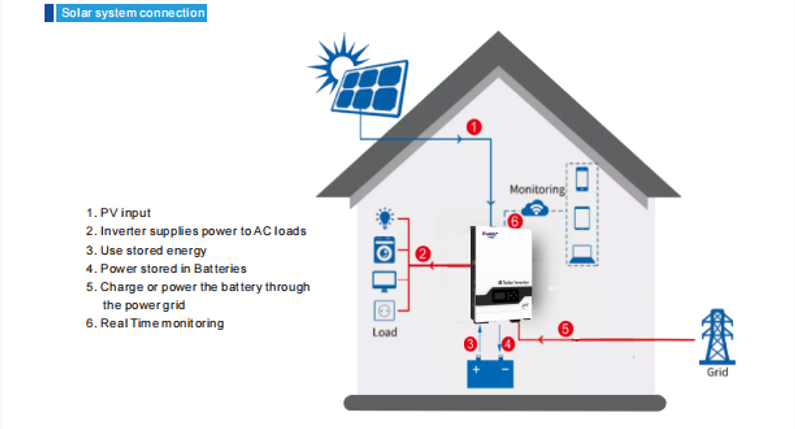
When the grid is disconnected, the on grid side is out of power, the device switches modes at a speed of 10 milliseconds to ensure the normal use of important loads at the back-up side. The location of this load is important to note, important liabilities need to be connected to the off-grid end.
For example, 5G communication base station, the general construction location is generally more remote, the power quality of the grid is not high, this time in order to meet the uninterrupted demand for electricity, you can connect the load to the back up end, the energy storage machine is set to back-up standby mode, usually supplemented by the PV power supply grid, and switching the battery power supply in the case of an emergency power outage.
How can an already installed project be transformed into energy storage?
Next we look at another form. Energy storage transformation projects need to use the transformation machine SBP and BT, do not have to change the layout of the original PV system, in the PV based on the addition of energy storage, this is connected to our AC side. Under normal circumstances power priority is also the same from the PV to the battery to the grid, the grid blackout, you can only rely on the battery power to power off-grid loads.
How to configure a home energy storage? How to choose the battery capacity?
How to configure battery capacity
Battery selection should take into account the load, whether it is used every day or backup; battery capacity is selected too large there is a waste, if the stored electricity are used up if the battery will exist in the phenomenon of undercharging.
How to configure a set of home energy storage? How to choose the battery capacity?
Energy storage equipment manufacturers also provide customers with different forms of battery capacity selection space. Such as stacked installation, modular all-in-one, all-in-one products with multiple power/energy, and other forms of liberalization of the energy selection program.
How to configure a set of home energy storage? How to choose the battery capacity?
Product diagram of Unimicron
So, in the home energy storage scenario, how to fastest and most direct selection of the best battery capacity program?
Currently, most households use energy storage as a way to regulate the utilization of grid power, which we customarily call grid-connected energy storage. In terms of grid-connected energy storage, the main purpose can be divided into three categories: PV self-consumption (higher electricity costs or no subsidies), peak and valley tariffs, standby power (grid instability or important loads).
1. Enhancement of PV self-consumption rate
The main purpose of this scenario is to install a PV storage system to reduce the electricity bill when the electricity price is high or the PV grid connection subsidy is low (no subsidy), so the PV system power is able to be stored and used at night in addition to the remainder of the daytime use.
We categorize the household's electricity use into daytime use (PV high power generation time period) and nighttime use (PV low or no power time period). According to the above purpose, the ideal state should be that the PV generates enough electricity for daytime use and stores it just enough for nighttime use.
That is, the effective battery capacity should be approximately equal to the PV power generation minus the daytime power consumption. However, this is an ideal situation. In order to avoid redundancy in battery capacity (and to avoid not being able to consume all of it during the night), we also need to make sure that the effective battery capacity is not higher than the nighttime electricity consumption.
How to configure a home energy storage? How to choose the battery capacity?
This requires a more accurate grasp of the patterns of household electricity consumption and the ability to familiarize ourselves with the rules for setting the priority levels of power supply by the energy storage system.
A family installed 5kW PV system, the daily power generation is about 17.5kWh, and the average daily power consumption of the family is about 20kWh, of which the average daytime power consumption is 5kWh and nighttime power consumption is 15kWh. then, the effective battery power should be about 17.5-5=12.5kWh, which is also in line with the condition that the nighttime power consumption is not higher than that of the nighttime power consumption (12.5kWh≤15kWh). Therefore, this family can choose 12.5kWh as the optimal effective power of the battery.
2. Reducing peaks and valleys to lower electricity bills
The main purpose of this scenario is to reduce the overall electricity expenditure by charging the battery during the daytime when the electricity price is low and discharging the battery during the nighttime when the electricity price is high.
We categorize the household's electricity consumption into daytime electricity consumption (when electricity prices are low) and nighttime electricity consumption (when electricity prices are high). In this scenario, the ideal situation is "the battery is charged during the daytime by using the remaining power after the PV supplies the load and the grid, and the battery power is just enough for the nighttime (peak tariffs)".
This means that the effective capacity of the battery is approximately equal to the household's nighttime electricity consumption. However, calculating battery capacity based on night-time electricity consumption is only a maximum demand value.
When considering the cost of the battery, it is generally necessary to consider the PV system capacity, battery investment and tariff savings at three levels to determine an optimal ratio. At the same time to meet, the battery discharge time is not longer than the night time power hours.
A family installed 5kW PV system, the average daily electricity consumption of about 20kWh, the night (assuming that the peak and trough period of electricity prices for 17:00 - 22:00 for a total of 5 hours) 15kWh. assuming that, according to the calculation, the effective capacity of the battery to cover the family's night-time electricity consumption of 2/3 for the optimal return on investment point.
Then, the effective capacity of the battery should be equal to 15*2/3=10kWh, at this time, the battery is about 10kWh/5kW=2h, which is less than or equal to the night-time electricity consumption of 5h. Therefore, the effective capacity of the battery for this family can be optimized to 10kWh. 3.
3. As a backup power source in unstable areas of the power grid
The energy storage system as a back-up power supply is mainly used in unstable areas of the power grid or in situations with important loads. For example, basic lighting, refrigerators, desktop computers, etc. in homes; data rooms in commercial places, important equipment in industrial places, lighting and ventilation equipment in breeding places, etc.
When designing the battery capacity with the main purpose of backup power, the main consideration is the amount of power needed to supply the important loads alone in the case of the battery being off-grid for the longest period of time (the expected maximum outage time), including the need to take into account the case of no PV at night.
In this scenario, the battery capacity is better calculated, only need to list all the important loads, and calculate the power consumption of all the loads during the longest outage time, you can initially determine the battery capacity.
Take an important commercial place as an example, the important loads are 10 cabinets in the data room, each with a power consumption of 3kW, and the expected longest outage time is about 4 hours. According to the calculation, the effective capacity of the battery of this project should be 10*3kW*4h=120kWh. Therefore, the effective capacity of the battery of this industrial and commercial project can be optimized to 120kWh.
The above three cases are the most common demand for installing grid-connected energy storage systems, and there is a rule to follow when selecting the battery capacity. However, in the actual application of two or more needs may occur superimposed situation, which requires us to be able to analyze the specific needs, and ultimately sort out the optimal battery capacity.
In addition, we mentioned in the above analysis is the effective power of the battery, and the actual selection of the battery also need to consider the shock load of the load, the battery's DOD (depth of discharge), the system efficiency loss, the performance of the energy storage equipment, the return on investment is expected and other situations.
Therefore, when selecting the battery capacity, it is necessary to consider the power under the whole household or use scenario as a whole system, and it is also particularly important to select the best equipment and system integration suppliers.
1.2 Value quantity: the investment cost of the whole system is nearly 80,000 yuan
Taking the 4.68kw PV+Watt 5.8kwh/6kw energy storage system of a household in the UK as an example, the total investment is about 10,000 pounds sterling, which is equivalent to a unit price of 17.61 yuan/w. Among them, the PV system accounts for 32% of the total, with the module at 3.08 yuan/w and the PV inverter at 2.56 yuan/w. The energy storage system accounts for 35% of the total, with a unit price of 4.97 yuan/wh. The cost of other materials+installation costs is 3,400 pounds sterling, which is 33% of the total. 33%.
Photovoltaic module 1800 4.68 kw 3.08 yuan / w
PV inverter 1500 4.68 kw 2.56 Yuan/w
Energy storage system 3600 5.8 kwh 4.97 yuan/wh
Other auxiliary materials 1900
Installation Fee 1500
Total 10300 4.68 kw 17.61 Yuan/w
Source: Federation of Master Builders, Affordable Solar, The Eco Experts, Oriental Securities Institute.
1.3 Trend: High Capacity Battery + Hybrid Inverter + All-in-One Trend
From the battery trend, energy storage batteries are evolving to higher capacity. With the increase in residential electricity consumption, the amount of electricity carried by each household has gradually increased, and some products have realized system expansion through modularization. Because of the penetration of new energy vehicles, increased power of household appliances and the impact of home office, the amount of electricity consumption per household has increased, and the amount of carry capacity for energy storage demand has been elevated.
(1) In terms of regional markets, the overall amount of electricity carried per household is gradually rising. Taking the German market as an example, the average amount of electricity carried in 2021 is 8.8kwh, while the data for the same period is 8.5kwh in 2020 and 8kwh in 2019. the increase in the amount of electricity carried in the German market is mainly due to the development of new energy vehicles and the increase in household electricity consumption.
(2) Modularized batteries for easy expansion. The charged amount and power of a single product is limited, and manufacturers will set up products to be able to achieve flexibility in configuration through modularization and combination to adapt to the needs of different capacity scenarios.
Battery Type Coupling Method Configuration Flexibility Charge
Enphase IQ Battery LFP AC up to 4 modules 3.36, 10.08 kWh
Generac PWRcell NMC DC Up to 2 modules 9, 12, 15, 18 kWh
Tesla Powerwall NMC AC up to 10 modules 13.5 kWh
Panasonic EverVolt NMC AC or DC DC-coupled battery up to 6 modules 11.4, 17.1 kWh
sonnen eco LFP AC 5, 7.5, 10, 12.5, 15, 17.5, 20 kWh
LG Chem RESU NMC AC up to 2 modules 9.3 kWh
Electriq Power PowerPod 2 LFP AC or DC AC-coupled battery up to 3 modules, DC-coupled battery up to 4 modules 10, 15, 20 kWh
SunPower SunVault LFP AC 12, 24 kWh
SolarEdge Energy Bank NMC DC Up to 3 modules per inverter, up to 3 inverters per system 9.7 kWh
(3) Batteries are moving from low voltage to high voltage. Higher voltage battery systems generate less heat, which can improve system efficiency, while simplifying the circuit structure and facilitating system installation. As cell production and manufacturing technology and battery management system control technology improve, high-voltage battery systems are becoming an industry trend.
Table 3: Comparison of high-voltage battery products for residential energy storage
Battery Type Voltage Rating (V) Battery Capacity (kwh) Output Power (kw) Price ($/kwh)
LG RESU H Series NMC 400 6.5/9.8 3.5/5 795
BYD Premium HVM LFP 150-400 2.76 2 870
sungrow es-sgr-sbr lfp 192-512 9.6 1.92 650
FIMER Power X FIM-BATT LFP 180-360 9.6/12.8/16 3.8/5.1/6.4
SolarEdge BAT10K LFP 350-450 10 5 985
Source: Clean Energy Reviews, Oriental Securities Institute
In terms of inverter trends, the demand for hybrid inverters suitable for the incremental market and off-grid inverters that do not need to be connected to the grid has increased.
(1) Sufficient power for new PV distribution and storage, increasing demand for hybrid inverters. Because the current home energy storage system to incremental market (new distributed PV users supporting energy storage), so the hybrid inverter demand increased. The stock market because of their own already with photovoltaic grid-connected inverter, so the incremental installation of energy storage system, choose the storage inverter, while the incremental market generally will be the photovoltaic inverter and storage converter combined into a hybrid inverter. Users are more inclined to install energy storage at the time of new PV installation, mainly because overseas household PV net metering policy uncertainty has become stronger, household PV revenue uncertainty has increased, and users are motivated to configure storage to realize self-generation and self-consumption and reduce revenue uncertainty.
Table 4: Overseas net metering policy changes
Greece 2021 Increase the net metering cap for the continental grid from 1 MW to 3 MW, and gradually eliminate the licensing requirement for net metering systems below 50 kW.
Netherlands 2020 Dutch government plans to reduce electricity prices by 9% per year from 2023 to 2030 California 2021 NEM3.0 proposal proposes to reduce solar tariff subsidies, shorten the net metering period from 20 years to 10 years, feed-in the surplus electricity after self-generation and self-consumption according to the full amount of electricity, and increase the monthly fixed fee for solar owners.
Data source: official government website, Oriental Securities Institute
(2) Demand for off-grid inverters is driven by markets such as the United States and South Africa. Frequent natural disasters in the United States, the risk of power outages is high, and the U.S. power grid is relatively fragile, the grid aging, in order to stabilize the grid, part of the photovoltaic system power companies do not allow it to access the grid. Therefore, the need to install off-grid, self-generated self-consumption, instead of generators. The U.S. market is growing at a high rate, and the demand for off-grid energy storage converters that fit the U.S. market is increasing dramatically. DEYE has integrated both grid-connected and off-grid modes into the same machine, which has been well received in the U.S. market due to its outstanding cost-control capability.
In terms of end-product trends, the current split-type is the main type, i.e., the battery and inverter systems are paired together, and the subsequent development is gradually moving towards an all-in-one machine. Previously, battery manufacturers usually provide battery systems, inverter manufacturers to provide hybrid inverter, channel sales according to the battery and inverter suitability with sales. The different brands of products brought troublesome installation and after-sales service. Therefore, pack manufacturers and inverter manufacturers have begun to involve each other, and some inverter manufacturers (e.g., Sunny Power, Huawei, Goodway, etc.) have already purchased battery cells and assembled their own packs, integrating the batteries and inverters for sale, which on one hand can expand sales, and on the other hand can help consumers save on one-time investment in equipment, simplify installation, and save on installation costs, as well as facilitating after-sales maintenance. Battery manufacturers such as Pai Energy's all-in-one products are under development.
The terminal price of the all-in-one machine is higher overall, but the high degree of integration of the all-in-one machine reduces the difficulty of installation and saves installation costs. Overseas market hardware cost only accounts for less than half of the overall cost, the subsequent labor costs including installation, service, design, follow-up grid application, subsidy application, etc., accounting for a major proportion. The all-in-one machine can save the follow-up cost, so it is gradually recognized in the high-end market.
From the regional market trends, the different grid structures and power markets cause slight differences in the mainstream products in different regions. Europe's grid-connected mode is dominant, the U.S. has more grid-connected and off-grid modes, and Australia is exploring the virtual power plant mode.
(1) Europe currently has more grid-connected modes. The European market has a high penetration rate of PV, the grid is relatively stable, the use of grid-connected systems can meet the demand. Energy storage systems need to interact with the grid, so product inverters should be certified as grid-connected to meet local grid requirements. Grid-connected application customers can switch mode, normal power generation mode, daytime PV to meet the demand for electrical appliances, and then charge the battery, the night automatically switches to the battery side of the DC output, the inverter cut to 220V to the home load power supply; cloudy and rainy days PV power generation is insufficient to send a command to the grid, from the grid to purchase power to meet the family load at the same time to the battery charging.
(2) The U.S. market has a high number of on-grid and off-grid modes. The laying of the U.S. power grid was concentrated in the last century, and the grid facilities are relatively old, laying hidden dangers for the grid's ability to transport power and load capacity, and the problem of aging equipment and obsolete technology is prominent. According to the statistics of the U.S. Department of Energy, 70% of the transmission lines and power transformers have been in operation for more than 25 years, and 60% of the circuit breakers have been in operation for more than 30 years. According to IEA statistics, U.S. customers experienced an average of 3.2 hours of disruption during major events and an average of 1.5 hours of disruption in the absence of major events, for a total of nearly five hours. For areas prone to severe weather, the average annual power outage can be more than 10 hours. The grid-connected machine can realize fast switching between grid-connected and grid-connected modes, with the battery as the power supply in case of power outage, and when the battery power is not enough, it can only wait until the next day for the battery to be full, so the grid-connected and grid-connected need to be matched with the interfaces of diesel, photovoltaic, or wind power.
(3) Australia is exploring the virtual power plant model. Multi-family households with installed PV storage systems can accept the VPP protocol and receive grid scheduling. Households can sell excess power; when there is a demand for power, power is purchased through this setup and then connected to the grid. For distributed energy sources such as residential solar systems, household and commercial energy storage systems, and electric vehicles with V2G, the Australian Energy Market Operator (AEMO) has developed a new technical standard and launched a virtual power plant program, where distributed energy sources can participate in the electricity market to gain revenue while meeting user demand.
2, market space: distributed photovoltaic super-expected + energy storage penetration rate "double β", is expected to global 2025 new installed capacity 58GWh
Household energy storage is usually used in conjunction with household PV, the installed capacity ushered in high-speed growth.
In 2015, the global household energy storage annual new installed capacity is only about 200MW, since 2017 the global installed capacity growth is more obvious, each year the new installed capacity growth has increased significantly, by 2020 the global new installed capacity reached 1.2GW, an increase of 30% year-on-year.
Europe and the United States is the world's most growth potential market.
From the point of view of shipments, according to IHS Markit statistics, in 2020 the global new home energy storage shipments 4.44GWh, a year-on-year growth of 44.2%, of which, Europe, the United States, Japan and Australia are at the forefront, occupying 3/4 of the global shipments, the European market and the German market is the most rapid, Germany's shipments more than 1.1GWh, ranked first in the world, the United States, shipments also more than 1GWh. Among the European markets, the German market is developing most rapidly, with Germany's shipment exceeding 1.1GWh, ranking first in the world, the United States also exceeding 1GWh and ranking second, and Japan's shipment in 2020 will be nearly 800MWh, which is far ahead of other countries and ranks third.
2.1 Demand-driven: energy transition is imminent, distributed PV exceeds expectations
Excessive energy dependence on foreign countries has brought about the energy crisis, and the Russia-Ukraine war has aggravated the conflict. Natural gas accounts for about 25% of Europe's energy mix. According to the BP Statistical Yearbook of World Energy, the structure of energy consumption in Europe, fossil energy accounted for a high proportion, of which natural gas accounted for a stable proportion of about 25%. Europe has a high external dependence on natural gas and relies mainly on imports. Among the sources of natural gas, 80% come from imported pipeline and liquefied natural gas, of which pipeline gas imported from Russia has 13 billion cubic feet per day, accounting for 29% of the total supply. Excessive external dependence on energy seriously affects energy security, and the government hopes to reduce dependence and maintain national security. The cessation of Russia's natural gas supply to Europe will threaten the energy supply of the European region, and there is an urgent need to develop clean energy to ensure energy supply.
Policy to accelerate the energy transition, upward adjustment of photovoltaic installed capacity is expected.
In order to ensure energy security, countries have introduced policies to accelerate the pace of energy transition. Germany will 100% renewable energy power generation target from 2050 to 2035 in advance, "Easter Package -Easter Package", to achieve 80% renewable energy power generation in 2030, solar power to reach 600TWh target, in 2030 to achieve 215GW Photovoltaic installations by 2030. The European Commission passed the REPowerEU motion to raise the EU's renewable energy target for 2030, and the renewable energy target may be raised again to 45% in 2030, with a number of initiatives to support distributed PV: 1) European PV rooftop program, which is expected to increase 17twh of electricity in the first year of its implementation (17% higher than the previous forecast), and generate 42twh of additional electricity in the 25th year; 2) all PV roofs to be installed by 25th year; and 3) all PV roofs to be installed by 25th year. 2) installing PV in all suitable public buildings by 25 years; and 3) requiring all new buildings to install PV roofs, with the approval process limited to three months.
Table 5: Countries' Upward Revision of PV Installation Expectations
Country Before adjustment New policy
Germany to realize 100% renewable by 2050, with an average annual new PV installation of 5GW to realize 100% renewable power generation by 2035, with an average annual new installation of 17.2GW before 2030.
UK to install 14.6GW of PV in 2021, including 5GW of household PV. By 2035, the installed PV capacity will increase fivefold from the current 14GW, with an average annual new installation of 5GW.
EU 2030 renewable energy accounted for from 32% to 40% 2030 renewable energy accounted for 45% again
Data source: government official website, Oriental Securities Institute
From the point of view of household PV penetration, overseas major PV demand countries installed from the distributed open, such as Japan, Australia, the United States PV development of the early stage of the new installed capacity to residential rooftop-based, at the same time due to the earlier start, Europe and Australia countries PV penetration rate is much higher than that of China, Australia, the United States, Germany, Japan's household PV installed capacity accounted for the proportion of the total PV installed capacity of 66.5%, 25.3%, 34.4%, 29.5%, 29.5% and 25.3% respectively, 34.4%, 29.5%, developed countries household installed capacity accounted for more than 10 times in China. Overseas distributed PV accounted for a higher proportion, we believe that there are two reasons:
(1) Europe's urbanization process is higher, housing is mainly independent or semi-independent homes, suitable for the development of household PV. From the data of 2016, there are 135.6 million housing units in the United States, of which 95 million are villas or townhouses, accounting for about 66%; according to the "Japan Housing-Land Statistics Survey 2013", the number of independent houses in Japan accounted for 54.9% in 2013, occupying a major share of the total number of houses. In terms of the number of floors of residential buildings, the proportion of 5-storey and below is 84.9%, and in Tokyo, the proportion of detached houses is still as high as 40.7% in 2013; the proportion of detached and semi-detached houses in Europe is also as high as 57.4% on average, and the proportion of detached and semi-detached houses in the UK is even more than 80%. In contrast, the type of housing in China is extremely different, with high-rise housing dominating and detached and semi-detached housing concentrated in rural and suburban areas.
(2) Policy support for household PV self-generation and self-consumption. European photovoltaic power generation to implement net metering policy, with renewable energy power generation facilities for consumers can be based on the amount of electricity delivered to the grid, from their own electricity bill to deduct a portion of only net consumption, this policy greatly improves the distributed photovoltaic self-generation and self-consumption of residual power on the Internet of the economy. The high subsidies for distributed PV in each country, and the relatively low bank loan interest rates, the low financing cost of PV systems, and the lack of default on subsidies stimulate the willingness to install.
Table 6: Subsidy policies for household PV in various countries
Country Time Policy
Netherlands 2020 The Netherlands introduced a ten-year net metering to support residential PV. The Dutch government plans to reduce electricity prices by 9% per year from 2023 to 2030.
Italy 2022 Simplified approval process for the installation of commercial rooftop PV systems with installed capacity between 50kW and 200kW Allocated €267 million ($294 million) for tax rebates to help companies cover part of the cost of purchasing and installing solar arrays.
Switzerland 2020 has allocated an additional CHF46 million ($47.5 million) for the residential and commercial rooftop solar subsidy program. This additional amount raises the subsidy budget to CHF376 million.
Source: Government website, Orient Securities Research Institute
2.2 Demand-driven: tariffs + subsidies drive up storage penetration rate
Currently, the penetration rate of home energy storage is relatively low, and there is huge room for improvement. 1) United States: According to the statistics of Berkeley Lab, only 6% of the U.S. market is paired with PV for home energy storage, and the highest proportion of optical storage co-built in the state of Hawaii is nearly 80%, followed by California's penetration rate of 8%, while other regions only have about 4%. 2) Germany: According to the statistics of ISEA RWTH Aachen, by 2021, the cumulative installation of home energy storage in Germany will increase from 1.5% to 1.5%. Germany cumulative installation of household energy storage 430,000 households, according to Germany's 40 million roof measurement, the current penetration rate of energy storage in all roofs is only 1.1%, the new installed angle, Germany in 2021, the new storage family 145,000, of which 93% for the new PV with storage, 7% for the stock of PV renovation, the new PV 215,000 families, storage and new PV co-built the proportion reached 63%. Accompanied by energy security and electricity stability needs to improve, policy subsidies landing, residential electricity prices and energy storage system cost reduction, the tendency to install energy storage system will be stronger, energy storage system penetration rate has a significant increase in space.
Short-term: rising electricity prices have an impact on the improvement of the economics of energy storage, become a catalyst for market growth, but the impact is limited, not a decisive factor. Assuming that the annual household electricity consumption of 4000kwh, 60% of evening electricity consumption, the installation of 5kw photovoltaic + 10kwh energy storage system, photovoltaic annual power generation hours of 1000 hours, photovoltaic investment cost of 1.3 euros / w (equivalent to CNY 9.1 yuan / w), the energy storage investment cost of 0.8 euros / wh (equivalent to CNY 5.6 yuan / wh), the residents of the electricity price of 0.3464 euros / kw. Initial investment of 14,500 euros (equivalent to 101,500 yuan), of which 6,500 euros (equivalent to 45,500 yuan) for photovoltaic systems and 8,000 euros (equivalent to 56,000 yuan) for energy storage systems. According to the Federal Statistical Office, the average annual income of German households is 56,000 euros, and the cost of installing a photovoltaic storage system accounts for 25% of the annual income of households. The cost savings of installing a PV storage system are 16,601 euros relative to the full life cycle of the grid (20 years), and 9,338 euros relative to installing only PV. The return on investment for installing a PV system is 8.25%, with a payback period of 11 years. A 50% increase in electricity prices will shorten the payback period to 8 years.
Medium-term: new energy alternative is a deterministic trend, a large number of new energy and grid caused by grid pressure, in order to promote energy storage installation, the higher the medium-term policy subsidies certainty and continuity. From the point of view of grid stability, a large number of new energy grid pressure is the cause, the government through subsidies and other policies to guide the power generation / user configuration of energy storage is the fruit of the European countries for the distributed photovoltaic + storage subsidies, the underlying logic is to reduce the pressure on the grid distribution and sale of electricity through the distributed system. The UK exempts household PV systems from VAT from April 2022, Italy raises tax relief for household storage equipment to 110% from 2020, and Poland, Sweden and other countries set up budgets to subsidize household photovoltaic storage systems.
Table 7: Subsidy Policies for Household Energy Storage by Country
Time Policy Content
UK 2022 Value-added tax (VAT) on heat pumps and solar modules used in residential solar applications is reduced from 5% to 0 from April 1, 2022, and the policy lasts five years
Italy 2020 Ecobonus tax credit for home energy storage equipment increased from 50-65% to 110% Switzerland 2020 Additional 46 million Swiss francs ($47.5 million) allocated to residential and commercial rooftop solar subsidy programs.
CHF 46 million ($47.5 million) for residential and commercial rooftop solar subsidy programs. This additional amount raises the subsidy budget to CHF 376 million, which is financed by taxes and fees paid by electricity consumers to fund renewable energy development.
EU 2019 CEP Program (Clean Energy Package) Decree 2019/943 and Decree 2019/944 propose strong support for the development of the home energy storage market and the removal of possible financial barriers to development
Germany 2019 German Renewable Energy Act Raising the installed capacity cap for paying tax on household energy storage from 10kW to 30kW
Poland 2019 AGROENERGIA Program for 10-50kw household PV/wind + storage systems, allocating a total of PLN 200 million in subsidies
Sweden 2016 Subsidy program for household energy storage Subsidies for household energy storage, covering 60% of installation costs, up to $5,400
Source: Government website, Orient Securities Research Institute
Long-term: With scale-up and technological progress, system cost reduction is a long-term trend. According to Solar Power Europe statistics, between 2015 and 2019, the cost of small-scale PV systems will decrease by about 18%, and the cost of household energy storage systems will decrease by nearly 40%, and it is expected that by 2023, the cost of household PV systems will further decrease by 10%, while the cost of household energy storage systems will significantly decrease by 33%. In the short term, due to fluctuations in supply and demand, the system cost fluctuates slightly, but the long-term trend of technology cost reduction is certain. 2021, the LCOE of household photovoltaic storage system is 10.1 euro cents/kWh, and the photovoltaic system is 14.7 euro cents/kWh, while the household electricity price of Germany in the same year reaches 31.9 euro cents/kWh, and the cost of photovoltaic storage system is about 1/3 of the price of electricity, therefore, installing the photovoltaic storage system has a good economy. Therefore, the installation of photovoltaic storage system has good economy, and with the increase of electricity price and cost reduction, the economy will be further improved in the future.
2.3 Regional Markets: Dominated by the U.S., Europe and Australia
2.3.1 U.S.: Subsidies Drive Market Demand
Policy is the biggest driver for the development of the U.S. behind-the-meter market. According to Wood Mackenzie statistics, 409.5MW/902.7MWh of new home energy storage will be installed in the US in 2021.
(1) At the federal level, in March 2018, the U.S. released the "New Rules for Tax Credits for Residential Side Energy Storage Systems", for residential side PV storage systems, if a user installs a battery storage system one year after installing a PV system and meets the condition that 100% of the stored electricity comes from PV power generation, the energy storage equipment can also receive a 26% tax credit. 26% tax credit.
(2) At the state level, California launched the SGIP program to subsidize residential power generation, and in November 2021 the House of Representatives passed the America Builds Better Act, which extends ITC policy subsidies to 2033 and grants up to a 30% incentive credit or a 6% basic credit through 2026, with credits through the end of 2031 and gradually decreasing in 2032 and 2033.3 (3) At the state level, California launched the SGIP program to subsidize residential power generation. For residential energy storage projects, the subsidy rate for energy storage systems less than or equal to 10kW is $0.5/Wh. For energy storage systems larger than 10kW, the subsidy rate is $0.5/Wh and the investment tax credit (ITC) is not available at the same time, and if you want to get the ITC at the same time, the subsidy rate for the SGIP is reduced to $0.36/Wh. Table 8: California SGIP
Table 8: Evolution of SGIP Policies in California, U.S.A.
Time Policy content
2000-2004 California government allocated $138 million to subsidize distributed generation.
2009 Expanded compensation from "distributed generation" to "distributed energy" so that stand-alone energy storage facilities are also compensated.
Extended the SGIP through 2015, with California budgeting $83 million per year for the SGIP in each of the years 2010-2011.
In 2011 the CPUC modified the program's incentive eligibility criteria to support technologies that achieve GHG reductions. Eligible technologies include energy storage, wind turbines, pressure-reducing turbines, fuel cells, waste heat capture and cogeneration, internal combustion engines, microturbines, and gas turbines
2014 Extended SGIP administration through 2020, allocating 75% of the total incentive budget to energy storage technologies
2018 SGIP program extended through 2024 and will be more focused on the energy storage side, providing $800 million in support for energy storage and other clean energy technologies
2019 Over $500 million is again invested in technologies including energy storage
2.3.2 Europe: rising electricity prices and improved economics
Europe is the world's largest household energy storage market. According to BNEF statistics, in 2020, Europe will add 1.2GW/1.9GWh of new energy storage installations, of which 639MW/1179MWh will be added in household energy storage, representing a year-on-year growth of 90% and accounting for 52% of the new market, and the cumulative total of household energy storage in Europe will be 1.6GW by 2020, with the market scale ranking the first in the world. According to Solar Power Europe statistics, in 2020, European household electrochemical energy storage growth is strong, a total of about 140,000 systems installed, of which Germany, Italy, the United Kingdom, Austria, Switzerland, five countries on the growth of the European household market of more than 90%, only Germany a country occupies more than two-thirds of the market.
Germany continues to occupy the first large family energy storage market in Europe, Italy, Austria and the United Kingdom continue to grow rapidly. In the next few years, Germany will continue to maintain the leading position in the European household energy storage market. According to EUPD research, 58% of German household PV users will consider adding energy storage equipment after the expiration of their FIT (feed-in tariff) contracts. Italy will follow closely, maintaining its position as the second largest market. And with strong government support, Austria is set to overtake the UK as the third largest market: it has extended its subsidies for household PV and storage for the period 2020-2023, with a total budget of €24 million, of which €12 million is earmarked for home storage. In addition, Switzerland, Spain, Ireland, the Czech Republic, Sweden and other countries will become new growth points in Europe with the support of national policies.
Rising electricity prices are boosting the economics of home energy storage and demand is growing rapidly. The Russian-Ukrainian conflict has further exacerbated the rise in commodity prices, which has greatly increased the cost of generating electricity from gas- and coal-fired power plants, which account for about 40% of Germany's electricity production, leading to an increase in wholesale electricity prices, with the contracted price of electricity for residents in Germany rising by 48% over the past 12 months. The rising cost of electricity will generate demand for home energy storage.
2.3.3 Australia: Virtual Power Plant Expands Revenues to Improve Economics
Australia has good soil for the development of household energy storage, and there is still huge room for future growth. Australia is sparsely populated, and electricity mainly relies on long-distance transmission, so distributed energy has been vigorously developed. Microgrids, energy storage and other technologies can reduce load fluctuations in the power grid while improving the reliability of electricity consumption, and accelerating the promotion of household battery systems in Australia is becoming increasingly important for the continued promotion of solar energy and decarbonization of the power grid, and at the same time helps to improve long-term energy affordability and reliability. According to BNEF statistics, in 2020, Australia will install 48MW/134MWh of new household energy storage.Australia has good conditions for the development of household energy storage, but it only accounts for 5% of the global market, so there is huge room for development in the future.
In our opinion, there are reasons for the development of household PV energy storage in Australia:
(1) the level of light resources is located in the world's first, more than 80% of the region's light intensity of more than 2000kW/m2/h, the same system cost of Australia's PV power generation cost is only half of the cost of power generation in Germany.
(2) Policy support: the Australian government through the Small-scale Renewable Energy Scheme (Small-scale Renewable Energy Scheme, SRES), the installation of household PV users issued Small-scale Technology Certificates (Small-scale Technology Certificates, STCs), high energy users are also required to purchase a certain percentage of STCs. Users with high energy consumption are also required to purchase a certain percentage of STCs to fulfill their obligations under the RET; at the same time, the Australian state governments provide FiT subsidies for residential PV;
3) Higher rates of home ownership and single-family dwellings. The prerequisite for installing a household PV system is having a separate roof, so apartments with centralized living are generally not eligible for installing household PV storage systems. According to the census data of regional statistical agencies, the proportion of total households living in detached/semi-detached houses in EU/USA/Japan/Australia is more than 50%, and the housing structure dominated by detached houses is the prerequisite for the large-scale development of household PV storage systems in these regions.
(4) The rising price of electricity in Australia. From the point of view of wholesale electricity prices, with the large-scale entry of solar power generation into the electricity market, daytime photovoltaic power generation hours of falling electricity prices, nighttime electricity prices peak, the urgent need for the assistance of energy storage, to realize the power shift time.
Australia is gradually establishing a virtual power plant mechanism to enhance the profitability of energy storage. 2018 South Australian Liberal government allocated A$180 million for 40,000 households to install small-scale electrochemical energy storage as well as large-scale electrochemical energy storage power plants, including virtual power plants.

In 2019 the Australian Renewable Energy Agency (ARENA) has committed $2.46 million to a Virtual Power Plant (VPP) integration trial for the Australian Energy Market Operator (AEMO), designed to demonstrate the operational capability of VPPs to deliver energy and frequency control services. Home energy storage participates in the ancillary services market through aggregators, and reports published by the Australian Energy Market Operator (AEMO) show that users can earn nearly A$3,000 through the Virtual Power Plant, with a payback period of around 6.8 years.
2.4 Spatial Forecast: 58.26GWh of New Installation of Home Energy Storage in the World by 2025
According to the number of households to measure the installed capacity of distributed PV, consider the penetration rate of home energy storage to get the number of installed home energy storage, assuming the average installed capacity per household can get the installed capacity of home energy storage globally and in each market. We expect that, assuming a 15% penetration rate of energy storage in the newly installed PV market and a 2% penetration rate of energy storage in the stock market in 2025, the global household energy storage capacity space reaches 25.45GW/58.26GWh, with a compounded growth rate of installed energy of 58% from 2021 to 2025.
Table 9: Measured Installed Capacity of Household Energy Storage
2020 2021e 2022e 2023e 2024e 2025e
Cumulative installed residential PV/GW 103 146 220 310 414 535
Newly installed residential PV/GW 28 44 74 90 104 121
Stock Penetration (%) 0.38% 1.0% 1.2% 1.5% 1.8% 2.0%
Incremental Penetration Rate (%) 4% 7.0% 9.0% 12.0% 14.0% 15.0
Distribution and storage duration (h) 2.2 2.3 2.3 2.3 2.3 2.3
New installed capacity (GWh) 2.80 9.27 18.99 31.70 44.89 58.26
Stock - Installed Energy Storage (GWh) 0.28 2.28 3.82 7.02 11.55 16.70
Incremental - Installed Energy Storage (GWh) 2.52 6.99 15.17 24.68 33.34 41.56
Incremental power additions (GW) 1.25 4.05 8.29 13.85 19.61 25.45
Source: BNEF, Wood Mackenzie, Oriental Securities Institute.
Note: Red is the real value with third-party statistical sources, blue is the hypothetical value, and black is the calculated value.
3、Industry barriers: products and channels constitute barriers
Barrier 1: Channel On the one hand, the household energy storage market is mainly concentrated in the United States, Europe and other countries and regions with high penetration of household PV and high residential electricity tariffs, and China's products usually need to lay out overseas distribution channels in order to enter the relevant market. On the other hand, household energy storage products are usually used in conjunction with
On the other hand, household energy storage products are usually used in conjunction with photovoltaic systems and have certain attributes of consumer appliances, so they can quickly reach downstream customers through a reasonable channel layout. There are two main types of channels in the U.S. market: one is to focus on the stock market through distribution channels. Through the distributor will sell the product to the PV installer, and then sold to the family who has installed the household PV. The other channel is through the builder to focus on the new market. Builders will purchase products uniformly when constructing new houses.
Barrier 2: Product Power
There are various types of home energy storage products with a wide range of carrying capacity. According to the carrying capacity, voltage level and coupling method of home energy storage products, they can be divided into several categories: small battery system, low-voltage modular battery system, high-voltage modular battery system, AC-coupled battery system, off-grid battery system and all-in-one solar battery system, etc., and the carrying capacity of the products ranges from 5-500kwh, so that the users can choose the appropriate products according to the needs of home electricity consumption.
R&D investment and service capability guarantee the company's products and brand. The core of energy storage system is safety, long life and low cost. The higher the amount of electricity carried by the energy storage system, the more complex the system and the more difficult the integration. Therefore, the company needs to have a high investment in research and development, strong technical reserves, the market with efficient, convenient, rich, reliable product delivery capabilities of enterprises will have a more competitive advantage. In addition, the company needs to provide a certain period of warranty for the product, usually 10 years, the company's good product quality performance, lower repair rate, higher safety evaluation is an important factor affecting the choice of consumers, constituting the industry brand barriers.
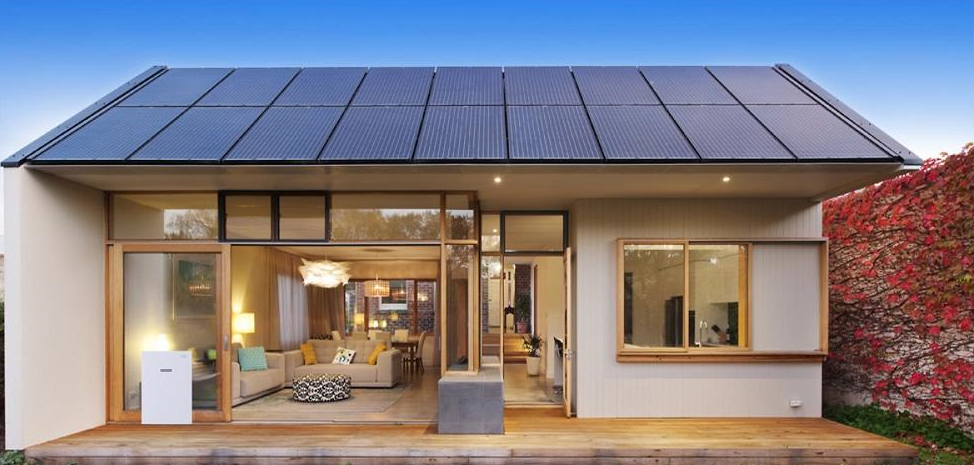
4, the battery and PCS as the core components of the most beneficial
Battery and PCS are the two major components of the home energy storage system, is the most beneficial part of the home energy storage market. According to our calculations, in 2025 the new installed capacity of home energy storage 25.45GW/58.26GWh, corresponding to the battery shipments 58.26GWh, PCS shipments 25.45GW. Assuming that the battery price of 1.37 yuan / wh in 2021, the PCS price of 0.96 yuan / w, reduced by 5% per annum (battery prices because of this year's price hikes in upstream raw material prices), can be measured by 2025, the battery and PCS as core components will benefit the most. Measured by 2025, the battery incremental market space of 78.4 billion yuan, PCS incremental market space of 20.9 billion yuan.

